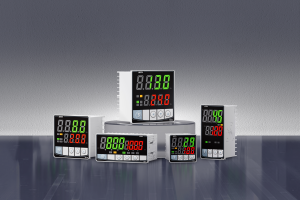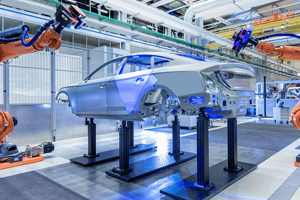What Is Offset in PID Controller: Understanding and Addressing Steady-State Error
1. Introduction
PID controllers have long been considered one of the primary tools in process control, serving to maintain desired output of systems while managing offset issues effectively. Understanding offset's meaning and how best to address it are key aspects for optimal PID performance; in this article we investigate this concept further along with impactful methods on how it impacts system performance as well as potential solutions.
2.Understanding PID Controllers
PID controllers are widely utilized control loop feedback mechanisms found in industrial control systems. Their purpose is to continuously calculate an error value between desired setpoint and measured process variable values and minimize this difference using adjustments of process control inputs in order to minimize error values.
* Proportional (P): The proportional component provides an output value that directly relates to the current error value, providing control actions which directly respond to its magnitude.
* Integral (I): The integral component addresses past errors by integrating errors over time to reduce residual steady state errors present with strictly proportional controllers.
* Derivative (D): The derivative component forecasts future errors based on their rate of change and provides proportional control actions in proportion to it - helping dampen system response while decreasing overshoot.
3.What Is Offset In PID Control Systems
Offset refers to any persistent difference between process variable and setpoint that persists despite efforts of controller. As a result of improper tuning or external disturbances, process variables fail to reach desired setpoint. Continual steady-state errors result.
*Offset refers to any steady-state error remaining after all transient effects have subsided and all effects from transient disturbances have dissipated from a system.
*Causes: Offset can result from various sources such as load changes, external disturbances or incorrect configuration of PID parameters. In proportional-only control systems however, offset is unavoidable as its output directly correlates to any errors experienced.
Offset can negatively influence the performance of control systems, leading to inefficiency, reduced product quality and increasing operational costs. Thus, understanding its impact is imperative in devising successful control strategies.
* System Performance: Offset can lead a system outside its ideal parameters and result in subpar performance; for instance in temperature control systems it could result in the process temperature being consistently higher or lower than setpoint.
* Real World Examples: Offset can manifest itself in industrial applications in numerous ways. For instance, deviations in product concentration could potentially threaten quality and consistency of final products produced using chemical processes.
4.Addressing Offset in PID Controllers
There are various strategies available to reduce or eliminate offset, but PID controllers play a pivotal role by integrating error over time to adjust output output according to what was found.
* Integral Action: In PID control systems, an integral action accumulates errors over time and adjusts output in response to steady-state errors. Increasing integral gain helps bring process variables closer towards their setpoint by decreasing offset and offsetting errors.
* Tuning Methods: Proper PID parameter tuning can significantly reduce offset. Techniques like Ziegler-Nichols or Cohen-Coon methods may be utilized to identify optimal settings.
5.Practical Strategies for Controlling Offset
Proper management of offset requires tuning, regular monitoring and adjustments of PID parameters - here are some practical suggestions for dealing with offset in PID controllers:
*Best Practices: Begin by employing a proportional-only controller to gain insight into how the system is behaving before gradually adding integral and derivative controller components while making necessary gains adjustments so as to limit offset while providing stable control.
* To Avoid: Incorrect settings of integral gain can lead to excessive oscillations and instability of your system, so regularly monitoring its performance and making necessary changes as required will ensure optimal control.
6.Conclusion
PID controller offset is an issue that often hinders performance and efficiency in control systems, hindering their optimal operation and increasing costs. By understanding its causes and effects and employing effective ways of dealing with it, you can ensure your PID operates optimally - regular monitoring and adjustment of PID parameters are vital in maintaining system efficiency while minimising offset.
- How to Set PID Controller Parameters: A Comprehensive Guide
- How to Calibrate a PID Controller: A Comprehensive Guide























